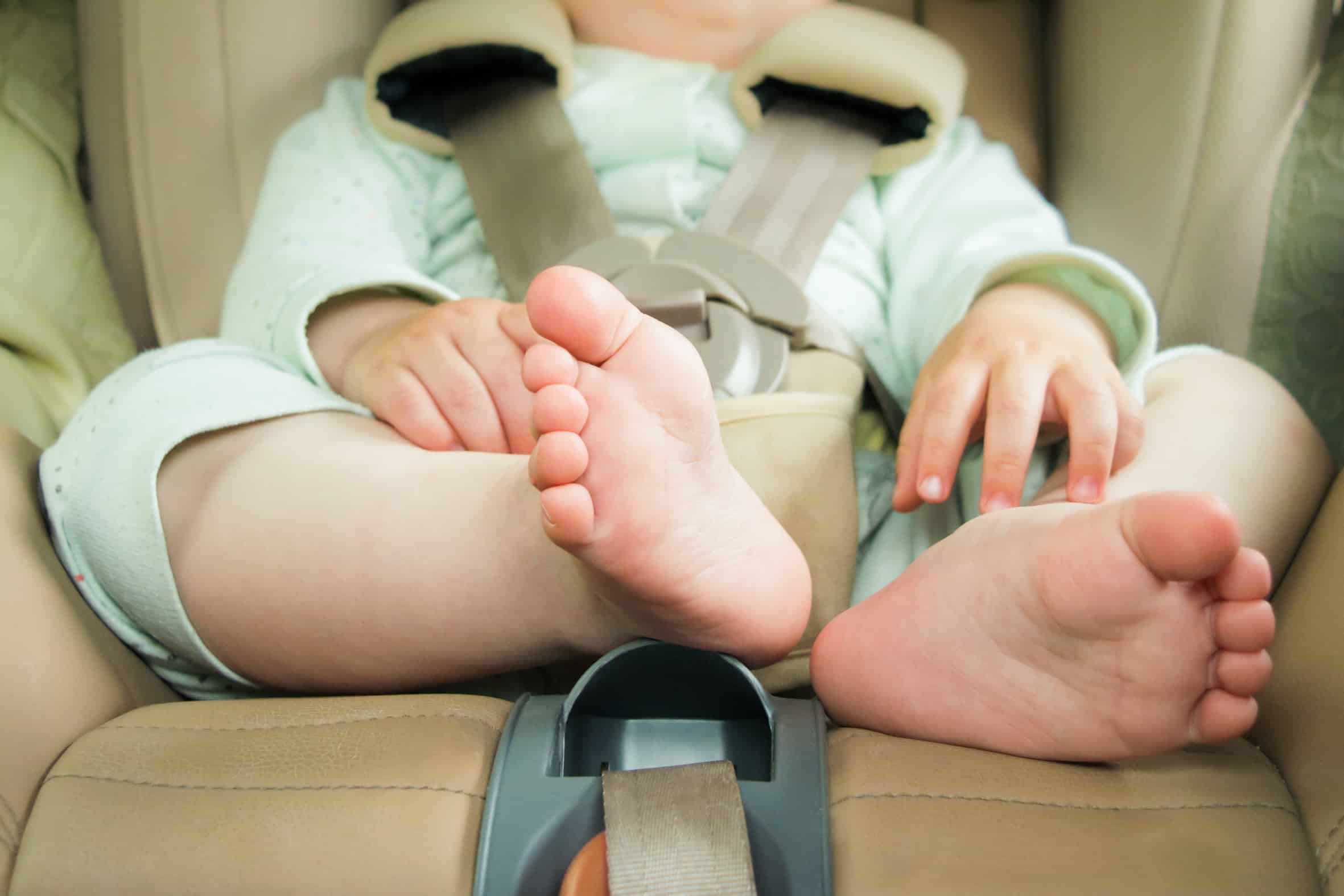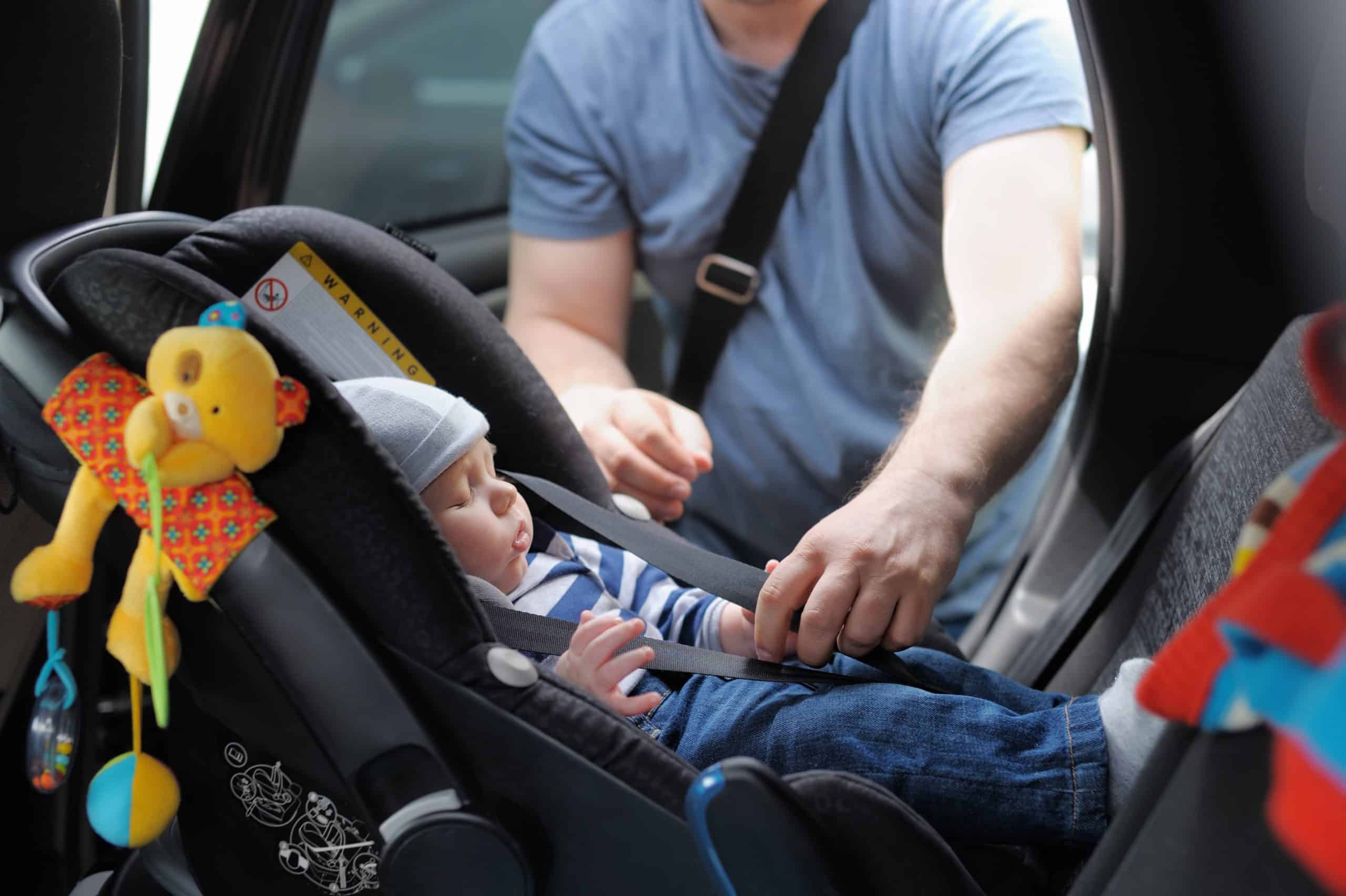tips, tricks and guides for parenthood
Car seats are an essential item to keep your little one safe. The UK government advises that your child should be in a car seat until they are 12 years old or 135cm tall. However, it’s important that you know how to use your car seat properly in order to keep your little one safe and comfortable. Misuse of car seats can cause long term health complications and in severe cases, death in young babies.
Research has been carried out into how long a baby should stay in their car seat each time. This research has helped parents get a better understanding on how to use their car seat properly in order to protect their little one. The two-hour rule is something that safety experts and manufacturers have agreed on. If you haven’t heard about this before, don’t worry – we’ll be explaining it in this article.

Of course, we don’t like to think of the worst-case scenarios. However, if your car was involved in an accident whilst your little one was in the car – how can it save your baby’s life? Young children’s and baby’s bones are not as strong as adults are. Whilst they developing, it’s much easier for them to damage their bones with only a little impact. Car seats protect your little one and take force of bumps – taking the pressure off of your baby.
We know that this is what seatbelts can do – so why can’t children use those at a young age? Well, whilst your little one is developing, their neck and head is much weaker than ours. Therefore, if they were to be involved in a crash, the seatbelt would not protect their neck and head and could cause long term health complications. It’s important to use a car seat for as long as you can.
As your baby gets bigger, they can move onto forward facing car seats and from there, booster seats. These are available to your child once they’ve developed enough to have them. However, you do not have to move to a forward-facing seat immediately if you don’t feel safe doing so. A lot of bigger child seats can also be put into the facing backwards.
Until your baby is over 9kg, they should travel in a rear facing car seat. This is to ensure their head and neck is protected in the event of a collision. Travelling in a reclined seat helps keep their head in a safe position and eliminates the risk of it flopping forward whilst they are asleep.
However, there are concerns about how long a baby should stay in their car seat. If they are consistently laying at an angle for a long period of time, it can cause an increase in their heart rate and respiratory rate. Over time, this can cause decreased oxygen circulation which in worst cases, could lead to suffocation.
Whilst these are worst case scenarios, it’s important to ensure that your baby is comfortable and safe in their car seat, especially during longer journeys. It may be useful to have someone in the back of the car to monitor the baby whilst travelling.
Research has been carried out by the NHS Foundation Trust, The University of Southampton and the University of Bristol on this issue. This looked into the issue of vibrations that are caused when travelling in a car seat.
It showed that vibrations can affect a baby’s heart and breathing but a larger study would be needed to investigate the significance of it. This research also highlighted that this does not make car seats dangerous and should not be a worry for parents.
A car seat should still definitely be used to transport your baby as it’s the safest way to protect their bones. However, when taking longer journeys with your baby, it’s important to take 15-minute breaks every two hours. This would involve physically taking your baby out of their car seat to stretch out and take a break. This isn’t only important for them; it’s advised that drivers should also take breaks whilst driving long journeys. So, this can also help you out too.

Around 58% of parents do not know what the two-hour rule is. If you’re sitting there thinking the same – don’t feel ashamed about it. It’s not something that you’re told about when you have your baby and isn’t spoken about as much as other things. Thinking about how long you keep your baby in their car seat isn’t usually something that crosses your mind. But, if you were sitting in the car for 2 hours, you’d also feel like you need to get out and stretch your legs. Treat your baby as the same.
Many researchers and manufacturers advise that a baby should not sit in their car seat for long that 2 hours at a time. Whilst some say that 2 hours is long enough in a 24-hour period, others say that taking breaks every 2 hours is also fine. This matter is still being researched thoroughly and we are slowly getting more useful information on how to keep our baby’s safe.
When a baby sits in the same position for a long period of time, it can:
Although the position that your baby is sitting in is safe, it may become a little less safe when they are in it for over 2 hours.
The main function of a car seat is to protect them whilst travelling. However, some parents have also started to use their car seat as a sleeping place for their baby. We know your baby looks adorable when sleeping in their car seat and you don’t want to disturb them, but it’s much safer to move them to a flat sleeping place like their cot. Of course, if you’re out and about or travelling, this option is not there. However, if you are at home, you should do this if possible.
This also applies when taking breaks on journeys. If your baby is asleep in their seat and you’ve been travelling for 2 hours, you need to take your baby out of their seat, even if this wakes them. Breaks are essential to keeping your baby safe and you should not choose to take them just because your little one looks comfortable.
Your baby should spend no longer than they have to in their car seat. As soon as they can be moved somewhere else, this should be actioned.

It’s really important that you do everything possible to keep your baby safe whilst they are travelling in a vehicle. Put yourself into your baby’s shoes and think about the risks your baby may be faced with if the correct measures aren’t taken. It’s not something you should worry yourself about when driving in the car. Just make sure you take simple steps like taking breaks and not overdressing your baby to keep them safe.
If there’s more that you would like to know about car seats, take a look at Everything you need to know about car seats. It will give you the answers to the most common questions about car seats and what you need to do to keep yourself and your baby safe.